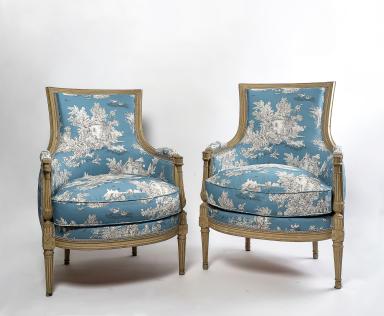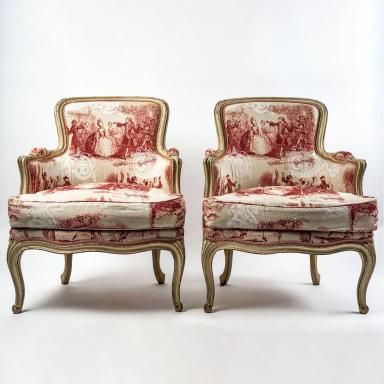Bergère
The Bergère is a type of armchair that probably owes its name to the fabric that covered it in the past and that frequently presented pastoral scenes. It first appeared under Louis XV, but its presence intensified during the Transition period and exploded under Louis XVI.
The appearance of the Bergère tells us a lot about the desires, tastes and mores of 18th century society. The reign of Louis XV is indeed the one when we leave Versailles to settle in the Tuileries. The appearance of the Bergère under Louis XV is closely linked to the reconfiguration of homes into small rooms, lounges and boudoirs where people come to sit, chat and rest.
Regardless of the style of the bergère and the variations that may exist at each period of its production - sometimes up to the contemporary period - a bergère can easily be identified by its full armrests which distinguish it from a cabriolet or an armchair for the queen; but also by its width, the depth of its seat, made even warmer by the presence of a thick cushion placed on the seat of the armchair.
Widely deployed by cabinetmakers throughout the 18th century, the Bergère has known many variants, gradually abandoning the emphasis and the rocaille ornaments to return to simplify with the return of a taste for the Antique at the end of the 18th century.
Nevertheless, contemporary brands and their designers continue to revisit the Bergère genre, renewing its lines and the fabrics that adorn it.
Louis Delanois, Louis-François Mayeux,



